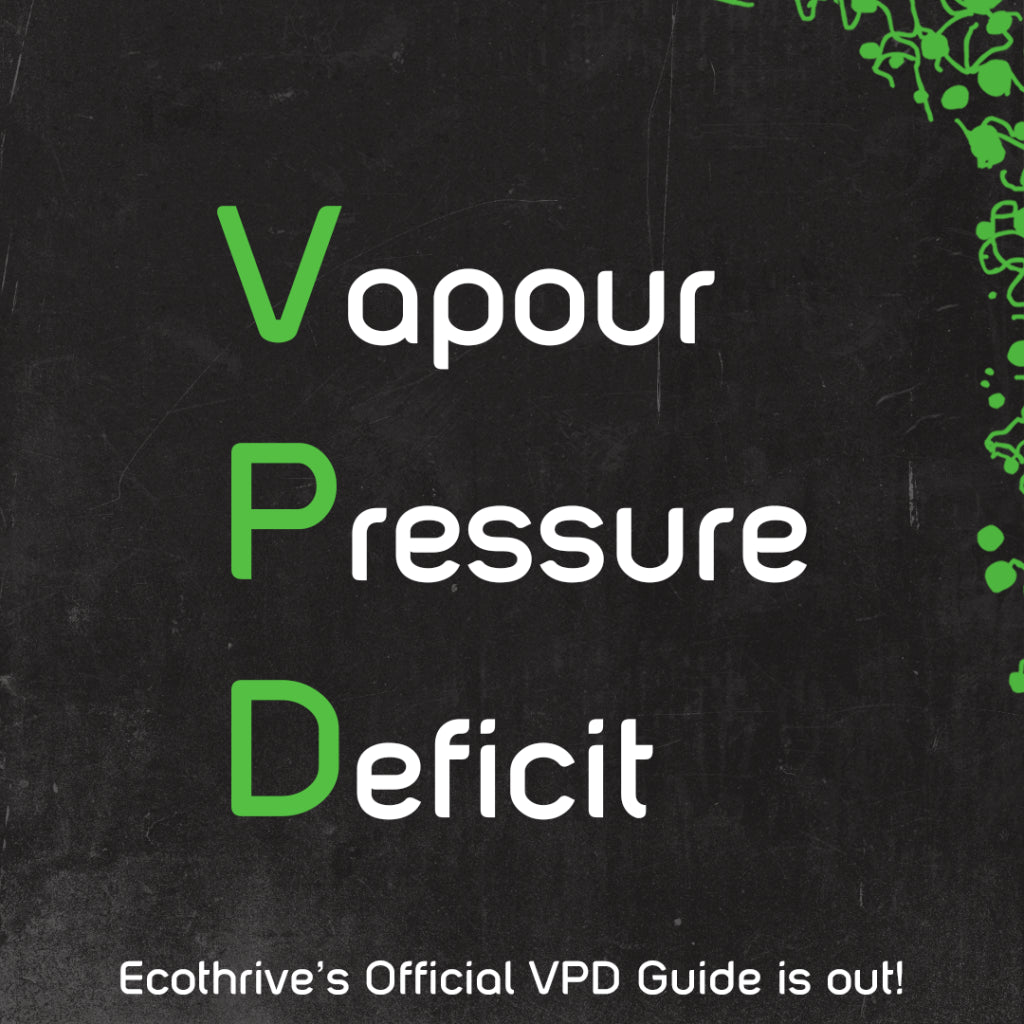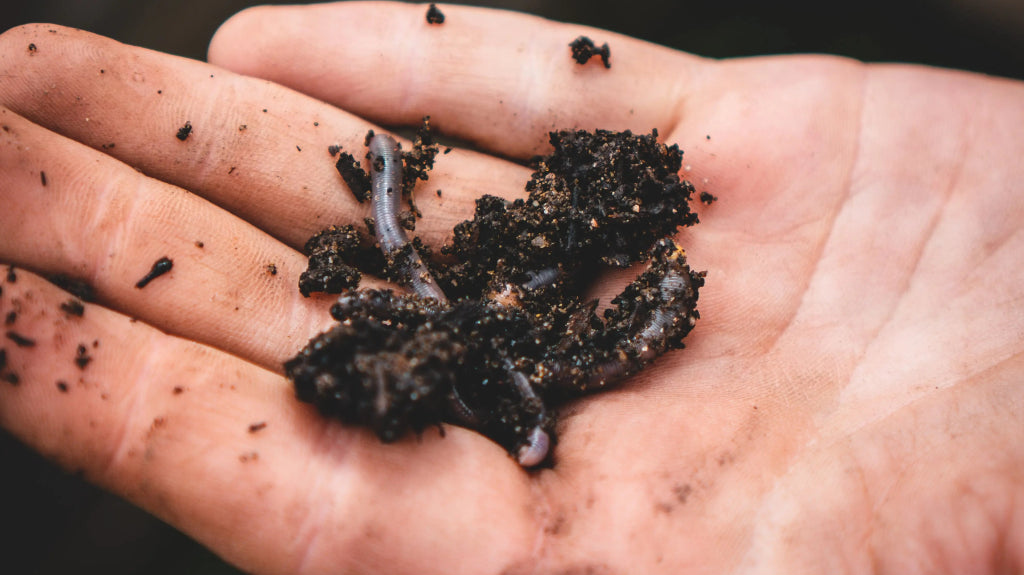What is VPD?
VPD is an abbreviation for Vapour Pressure Deficit. VPD is a measurement of how much more “room” there is for humidity (water vapour) in the air at the current temperature. This is important because if there is no “room” left then the plant cannot transpire properly, potentially causing mineral deficiencies, such as reduced calcium uptake and lower growth rates in general.
What do you mean by “room” in the air?
At different temperatures, the air around us is able to hold different volumes of water. The measurement of the volume of water in the air is called relative humidity. As the air temperature falls, the amount of water that can be held will reduce. This will help us in understanding why VPD is important.


Why does it matter if there is too much or too little water in the air?
If you have ever visited a tropical greenhouse in summer you will have felt the effects of high temperatures with high humidity. It can become uncomfortable as it’s harder for your body to perspire (sweat). This is because our skin releases water, the water evaporates and this pulls the heat away from the body. A similar process happens with plants, called transpiration. Similar to our skin, leaves have tiny pores (stomata) that release water. Aside from evaporative cooling, transpiration also helps in the transportation of water and nutrients to different parts of the plants.
Low VPD will slow your plant’s transpiration, potentially slowing the uptake of nutrients. Low VPD can also be associated with high humidity and condensation in the surrounding environment leading to moulds and root rots in plants. Conversely, if your VPD is too high it allows your dry ambient air to create excessive transpiration from plants. This creates a situation in which the plants are forced to uptake a lot more water and nutrients, resulting in tip burn and leaf curl.The worst-case scenario with high VPD is the plant can’t keep up with the excessive transpiration and has to close its stomata to conserve water and plant growth stops altogether.
How will learning about VPD help me as a grower?
This is a question we have been asked many times over the years. Keeping your VPD in the correct range is one of the easiest ways to master your environment. VPD is basically using a balance of temperature and humidity to find the sweet spot for your plants to thrive in. VPD will control plant transpiration rates, CO2 uptake, nutrient uptake and plant stress.
VPD for indoor growing; HPS vs LED lighting.
Lighting can be a big influence on your grow room environment. A 600W HPS fixture will usually give off a lot more radiant heat than a 600W LED fixture. This is evidently more noticeable when we take a leaf surface temperature reading, a grower with a stable air temperature and good air circulation would usually see around a 1-2°C cooler leaf temperature compared to the air temperature.
Typically growers who change from HPS to LED grow lights find the plant temperature can be much cooler than the air, leading to low VPD, slow growth and nutrient deficiencies. To correct this, LED growers often use heaters to maintain a higher air temperature, which increases the plant temperature and keeps the VPD in the sweet spot. Ideally, the plant temperature should be a minimum of 25°C for optimal growth.
Every environment is different so that’s why having the ability to read your own leaf temperature is so helpful.
How do we measure leaf temperature?
The best way to measure leaf surface temperature is with a digital infrared thermometer, these cost between £10 and £30. They will usually be a simple “point and shoot” reading, shaped like a gun.

When reading leaf temperature, it is useful to take a few readings of the larger leaves in direct light, these are usually at the top of the canopy in vegetative growth or just below the tops of the plants in fruit or flower production. Taking multiple readings and getting an average is important so you are sure it’s a true representation of the overall growing area.
How do I calculate my VPD?
As we have learnt, environmental control is key to growing happy plants! Calculating your VPD is really easy! All you need is three simple measurements:
- Air temperature
- Relative humidity
- Plant temperature using an infrared thermometer
A good quality digital thermo-hygrometer is fine to read the air temperature with relative humidity, just make sure it’s not in direct light and has good air movement around it.
VPD combines the air temperature, humidity & leaf temperature into one reading. You use this to determine how well plants are going to transpire.






Step 1
Look at the VPD chart, on the left-hand side you will see a temperature scale. This is the air temperature.
Step 2
Look along the top row of the VPD chart for the “Relative Humidity” line. Match your relative humidity reading to the closest option on the chart.
Step 3
Now we need to look at the stage of growth. The VPD chart has been colour coded to make it easier; light blue for propagation and early vegetative growth, green for late vegetative and early flower growth, and orange for mid-late flower. The red areas are the “danger zone”; drifting into these areas can result in poor growth, nutrient uptake issues and ultimately lower yield.
Step 4
Now it’s time to get the leaf surface temperature, with this information we can navigate the charts more efficiently.
Step 5
As an example, say we have an air temperature of 27°C and a leaf temperature of 25°C. We can now easily see there is a 2°C difference between the air and plant temperatures. For this scenario, we would now use the -2°C VPD chart as our reference point for this current environment.
VPD Targets
We have covered why VPD is important and how to take the measurements required to calculate it. Now we can look at the target VPDs and we can introduce the VPD tables. The table below is a good guide to the VPD band you should be aiming for.
| Transpiration Rate/Growth Stage | VPD (KpA) |
|---|---|
| Low Transpiration / Propagation /Early Veg | 0.4-0.8 |
| Healthy Transpiration / Late Veg / Early Flower | 0.8-1.2 |
| High Transpiration / Late Flower | 1.2-1.6 |
| Danger Zone | <0.4 / >1.6 |
If you would like to calculate your exact VPD, we have created this open-source Dynamic VPD Calculator here for anyone to use for FREE! All for the love of the plant. Download this Excel spreadsheet below. It can be opened via Google sheets for easier mobile access. For unrestricted access to the formulas for your own projects, email us for the password – info@ecothrive.co.uk
My VPD wasn’t in the optimum zone, how do I fix it?
Making the necessary adjustments to your air temperature and humidity should be enough. Trying to maintain a consistent daytime temperature of 26-28°C and a lights-off temperature of 24-26°C should be a good starting point.
When making big alterations to your growing environment it’s always important to remember that plants can suffer environmental stresses and shock. When transitioning your target VPD from one growth stage to another, do it gradually over the course of a week.
Pro tips: When growing indoors, our aim is to keep the plant temperature around 25°C to maintain healthy growth. It can be warmer than this if the VPD is kept in range, but cooler than 25°C often results in poor growth.
It’s also worth noting that some grow room equipment, such as a carbon filter, will not work correctly in high humidity, so most growers try to keep relative humidity below 75%. When running a low VPD environment and high humidity, it’s also important to not allow the air temperature to change quickly, a sudden drop in air temperature at a high humidity can cause condensation on the leaves, which is an invitation for various foliage diseases.
If your VPD is often out of range, it can be a big help to use a stress-relieving product such as Biosys.
Thanks for reading,
Team Ecothrive!




Leave a comment
This site is protected by hCaptcha and the hCaptcha Privacy Policy and Terms of Service apply.